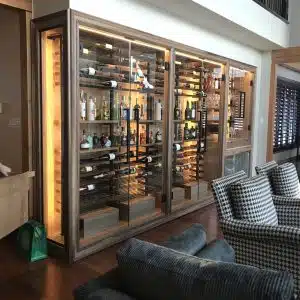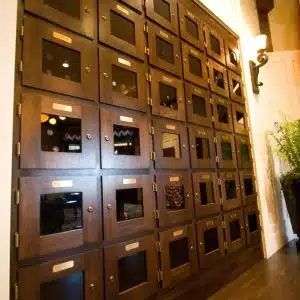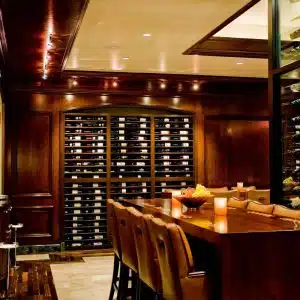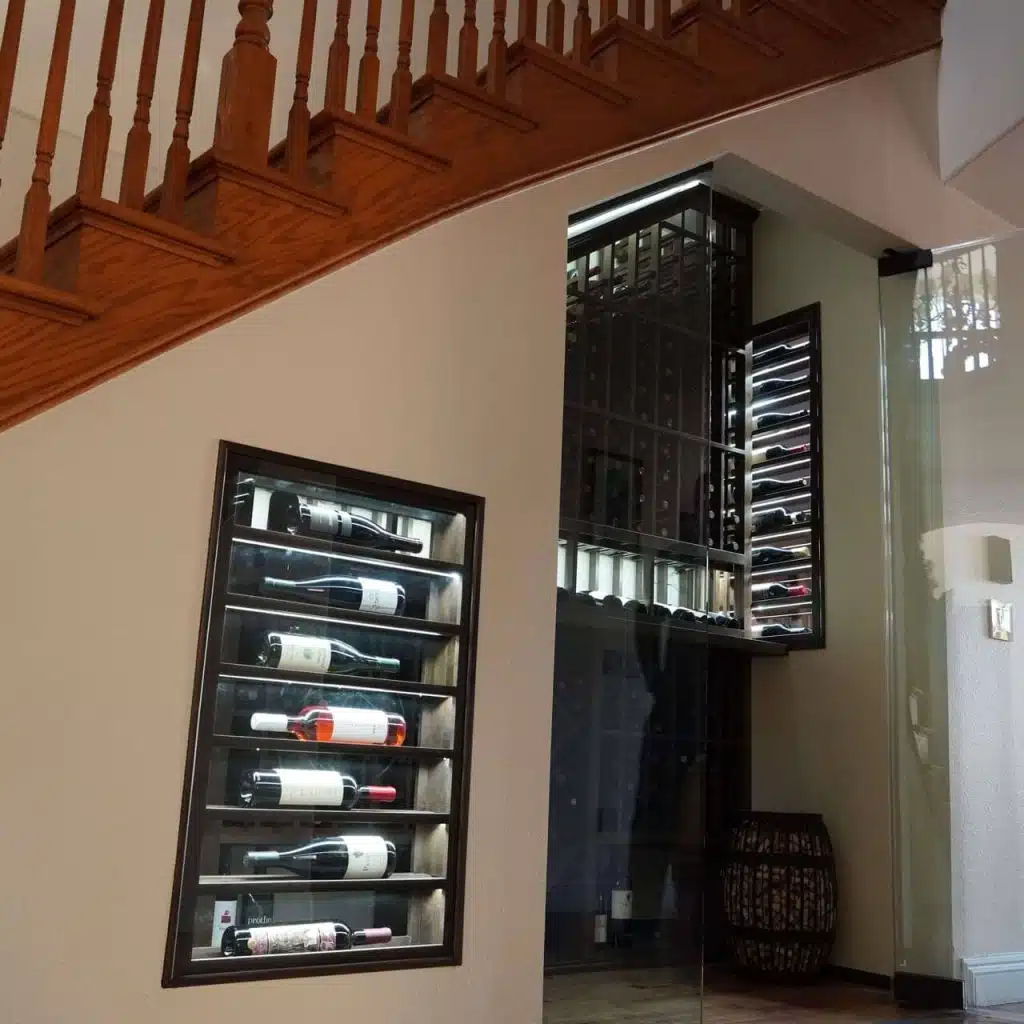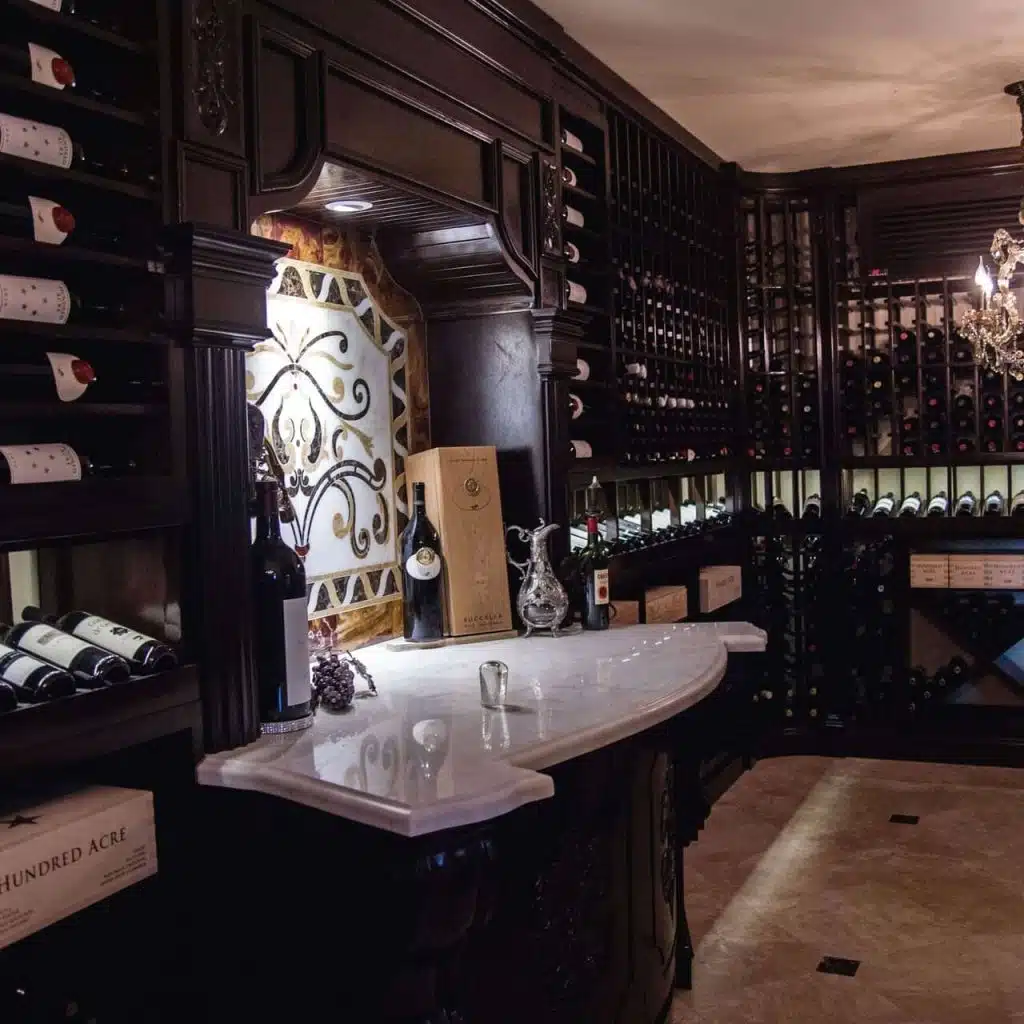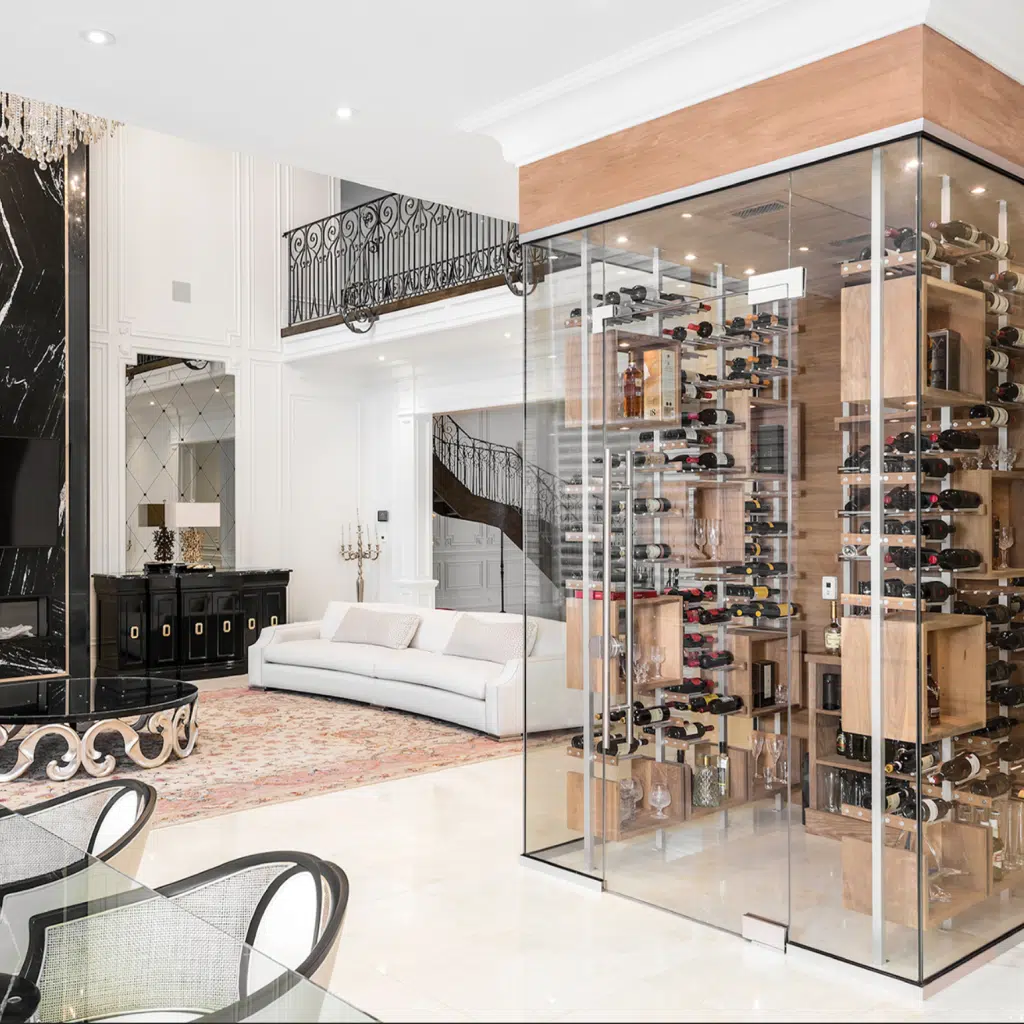Wooden Wine Cellar Doors: A Complete Guide
Wooden wine cellar doors are more than just gateways; they are the ingress to a very personalized world of sophistication. From improving the aesthetics of your wine cellar to ensuring the best storage conditions, these wooden doors play an important role in the presentation and long-term preservation of your delicate wine collection.
In this article, we dive into the intricacies of wooden wine cellar doors, exploring different designs, varieties of wood most popularly used, and the special features that enhance their functionality and style.
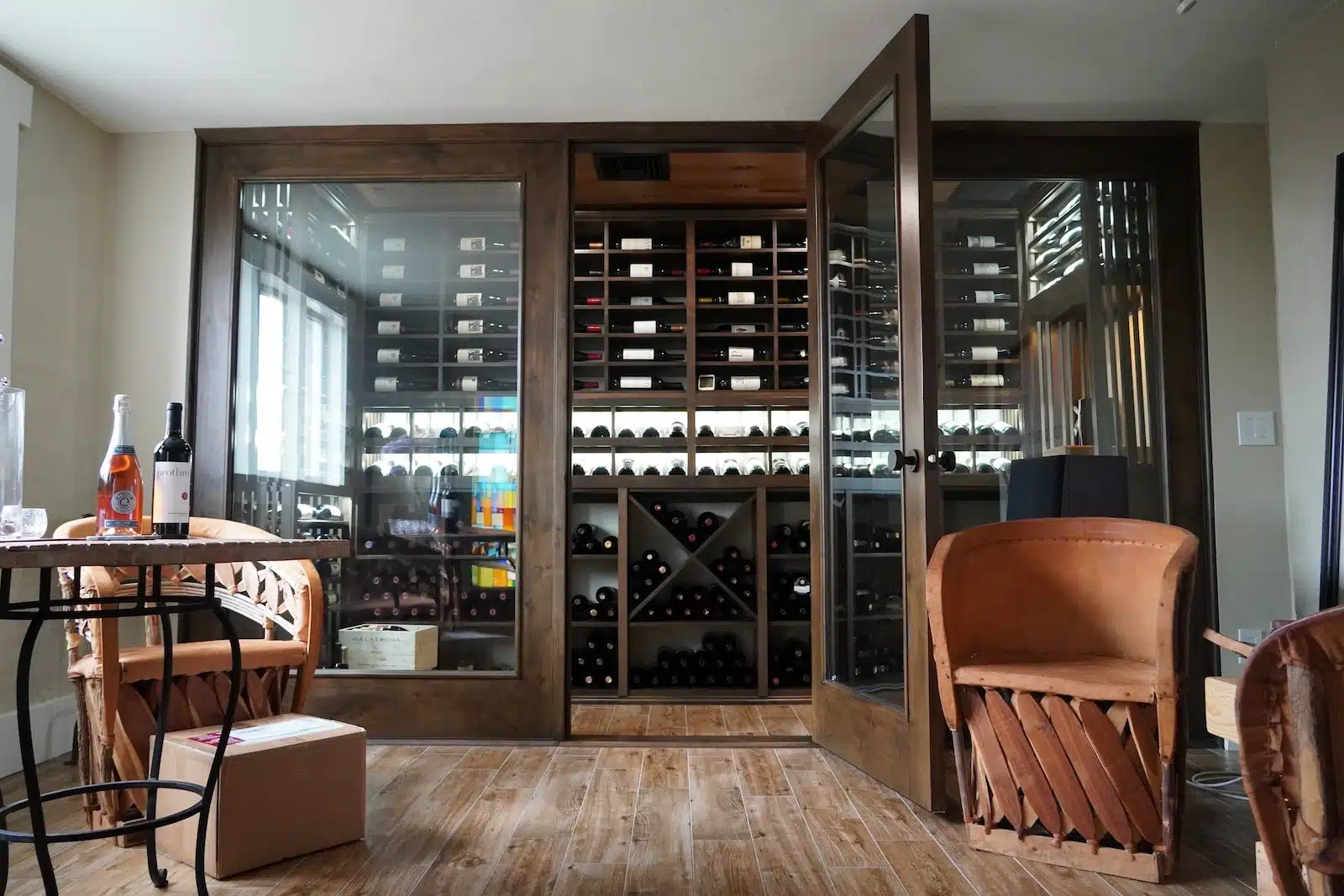
Types of Wooden Wine Cellar Doors:
You might be wondering how is it that there are different types of wooden wine cellar doors when all of them are wood. Well, there’s more to having just wood in wine doors. Wooden wine cellar doors can be manufactured in different shapes, sizes, and styles, so they can perfectly blend with the overall design or theme of your wine cellar! Here are some types of wooden wine cellar doors you can have customized:
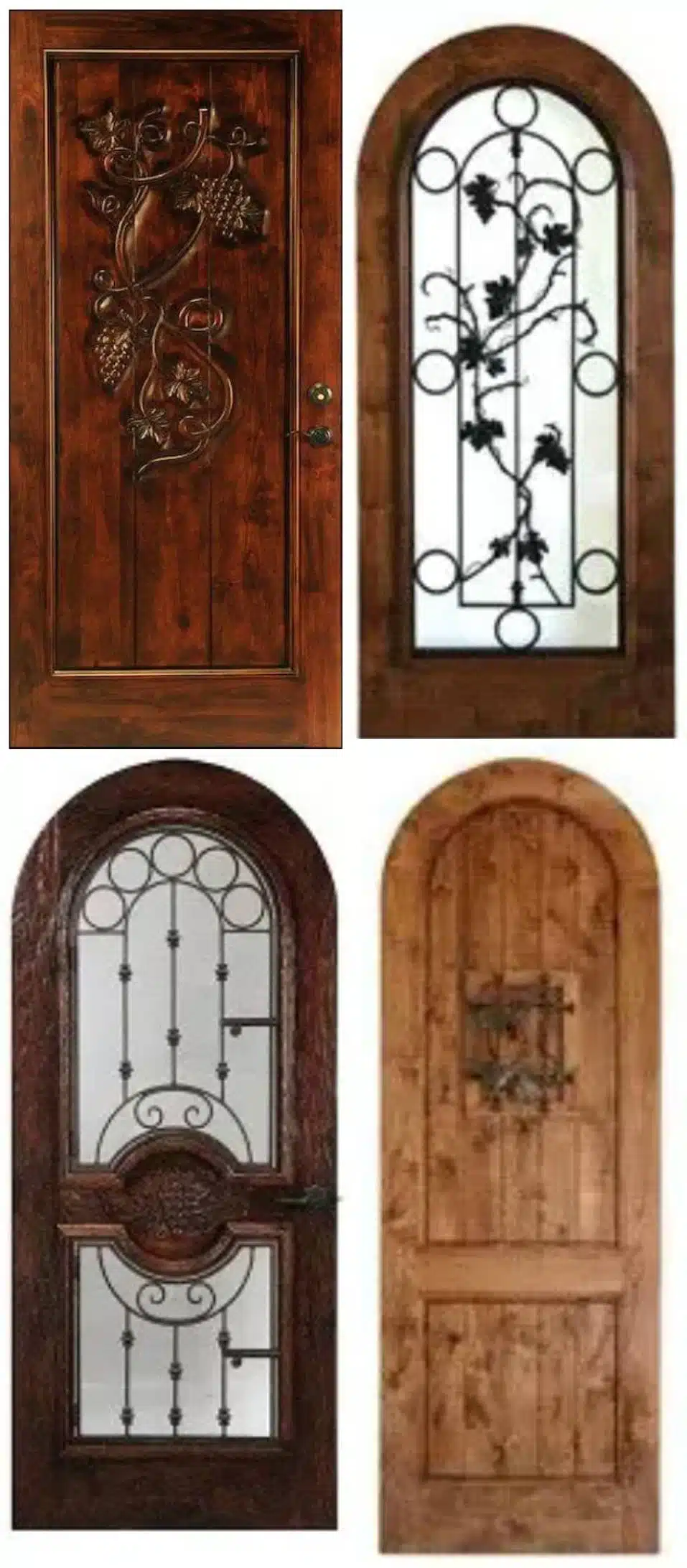
1. Barolo Doors
A full length contemporary door, featuring a wooden frame and an insulated glass center. They may look simple from afar, but these these doors are crafted from select hardwoods such as African mahogany or American cherry, chosen for their durability, rich colors, and luxurious aesthetic.
2. Chianti Doors
Inspired by the rustic beauty of Tuscany, Chianti doors are typically crafted from sturdy oak or knotty alder wood, known for their durability and natural charm. Characterized by earthy tones and distressed textures, Chianti doors often showcase arched tops and wrought iron accents, echoing the timeless appeal of Tuscan vineyard estates. In some designs, there’s actually a peek-a-boo window behind the iron grills to enhance its medieval aesthetic.
3. Sonoma Doors
stunning wine cellar doors, framed on the edges with quality hardwood and built with a full-length glass center adorned by delicate metal ornamental works. Sonoma doors can be custom-built with your choice of wood from Knotty Alder, Clear Alder, Okoume, African Mahogany, Maple and more.
4. Tuscan Doors
looks similar like a Sonoma door complete with a glass center, iron detailing, and hardwood frame and door jamb. However, Tuscan doors usually come with an arched top, giving your space a more relaxed feel.
5. Carved Doors
Solid wooden doors made from premium hardwood, embellished with custom, hand-carved designs for more character. These solid wooden doors don’t offer a peek inside the cellar, but they are stunning and popular especially for those who want to put in their family crests.
6. Double Swing Doors
Full solid wood doors or doors with glass centers custom built to provide a beautiful welcome to a large wine cellar entryway
Types of Wood Commonly Used:
Wine cellar doors need to last for a long time. Since wood is organic, more porous and more prone to rotting compared to metal, wooden wine cellar doors don’t just make use of any type or species of wood. They are manufactured from premium quality hardwood that underwent rigorous testing and checking. Here are some of the most commonly used types of wood for wine cellar doors:
1. Mahogany
Prized for its durability and rich, reddish-brown hue, mahogany lends a luxurious touch to wine cellar doors. Its ability toresist warping and moisture is also unsurpassed, making it an excellent choice for cellar environments.
2. Redwood
Known for its natural beauty and resistance to decay, redwood is a popular choice for wine cellar doors. Its distinct grain patterns and reddish tones add warmth and character to any space. Although it is more on the porous side and doesn’t stain that evenly compared to other species, the benefit of it is it looks more natural!
3. Oak
Renowned for its strength and longevity, oak is a timeless option for wine cellar doors. Whether in its white oak or red oak variety, it exudes elegance and can be stained to complement various design schemes. Among the many varieties, Oak is one of those that takes stains and polish really well!
4. Alder
Another wood variety that’s durable and stains really well is Alderwood. Alder is among the softer woods among the hardwood class. But it ages well, can be easily integrated with a glass center, and has very apparent striations that make it look very natural even after polishing.
Special Features That Elevate Your Wine Cellar Door:
The exciting thing about wooden wine cellar doors is you can design them in the most creative way you want. Special features you can add to your wooden door doesn’t also include only those for aesthetic purposes, but for functional purposes as well! Here are some of the most popular additions you can have with your custom wine cellar door:
1. Auto Bottom Lock:
Ensuring security and peace of mind, the auto bottom lock automatically engages when the door is closed, safeguarding your valuable wine collection. It acts as an additional lock that ensures your door doesn’t swing and the air gap between the door’s base and the floor is lessened
2. LVL-Core
Engineered for strength and stability, doors with a laminated veneer lumber (LVL) core offer superior resistance to warping and twisting, maintaining a tight seal and optimal climate control within the wine cellar. LVL is a composite product formed by stacking up multiple layers of thin veneer, producing a stronger, more durability block of wood.
3. Insulated Glass Panels
For those seeking both aesthetics and functionality, insulated glass panels provide visibility into the cellar while helping to regulate temperature and humidity levels, preserving the quality of your wines. Wooden wine cellar doors can be built with insulated glass on the center without compromising or reducing its overall quality and capability to effectively seal the wine room.
4. Custom Carvings and Engravings
Elevate your wine cellar door to a work of art with custom carvings or engravings, showcasing intricate designs, family crests, or vineyard motifs that reflect your personal style and passion for wine.
How to Choose Your Wooden Wine Cellar Door
When selecting your wooden wine cellar door, you need to consider several factors to ensure you capture both your cellar’s functional needs and aesthetic appeal.
You can begin by assessing the dimensions of your cellar’s entrance to ensure the exact dimensions your door should have. It should fit seamlessly without obstructing access or compromising insulation.
Next, different species of wood have different characteristics so it would be best to consult with your wine cellar designer and builder for the most suitable one for your space.
When styling your door, remember that it should complement the overall ambiance of your cellar, whether it’s simple rustic, luxurious, medieval, etc. But before choosing the style of your wine door, we recommend prioritizing its functionality first to maintain optimal storage conditions.
Lastly, look for a reputable wine cellar designer and construction specialist so you don’t have to worry about the quality, workmanship and longevity of your wine cellar door! Contact CWC.com at +1 (949) 771 – 2712 for more details or inquiries!


